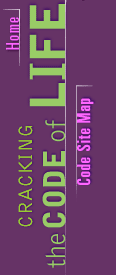 |
 |
Sequence for Yourself
by Rick Groleau
A single DNA nucleotide, the base unit of the human genome, is a tiny, tiny thing. Each one is made up of only 30 atoms (plus or minus a few, depending on the base), making it much too small to be identified by even the most powerful electron microscope. So how, then, do researchers determine the sequence of A's, G's, C's, and T's that comprise the genome?
The answer is that they've had to develop a new process, what Bruce Birren of MIT's Whitehead Institute calls a "biochemical magnifying glass." But this magnifier doesn't enlarge the view of DNA bases. Rather, it makes billions of identical copies of a small sequence of DNA -- enough copies to allow a machine to detect marked bases within the DNA.
At first glance, the method described below may seem a bit complex and even roundabout. Well, sequencing the human genome is not as easy as A-G-C. The concepts involved, however, are easy to grasp. "Sequence for Yourself" should give you a good idea of the general process.
Rick Groleau is managing editor of NOVA Online.
Watch the Program Here |
Our Genetic Future (A Survey)
Manipulating Genes: How Much is Too Much? |
Understanding Heredity
Explore a Stretch of Code |
Nature vs Nurture Revisited
Sequence for Yourself |
Journey into DNA |
Meet the Decoders
Resources |
Update to Program |
Teacher's Guide |
Transcript
Site Map |
Cracking the Code of Life Home
Editor's Picks |
Previous Sites |
Join Us/E-mail |
TV/Web Schedule |
About NOVA
Watch NOVAs online |
Teachers |
Site Map |
Shop |
Search |
To Print
PBS Online |
NOVA Online |
WGBH
© | Updated April 2001
|
|
|